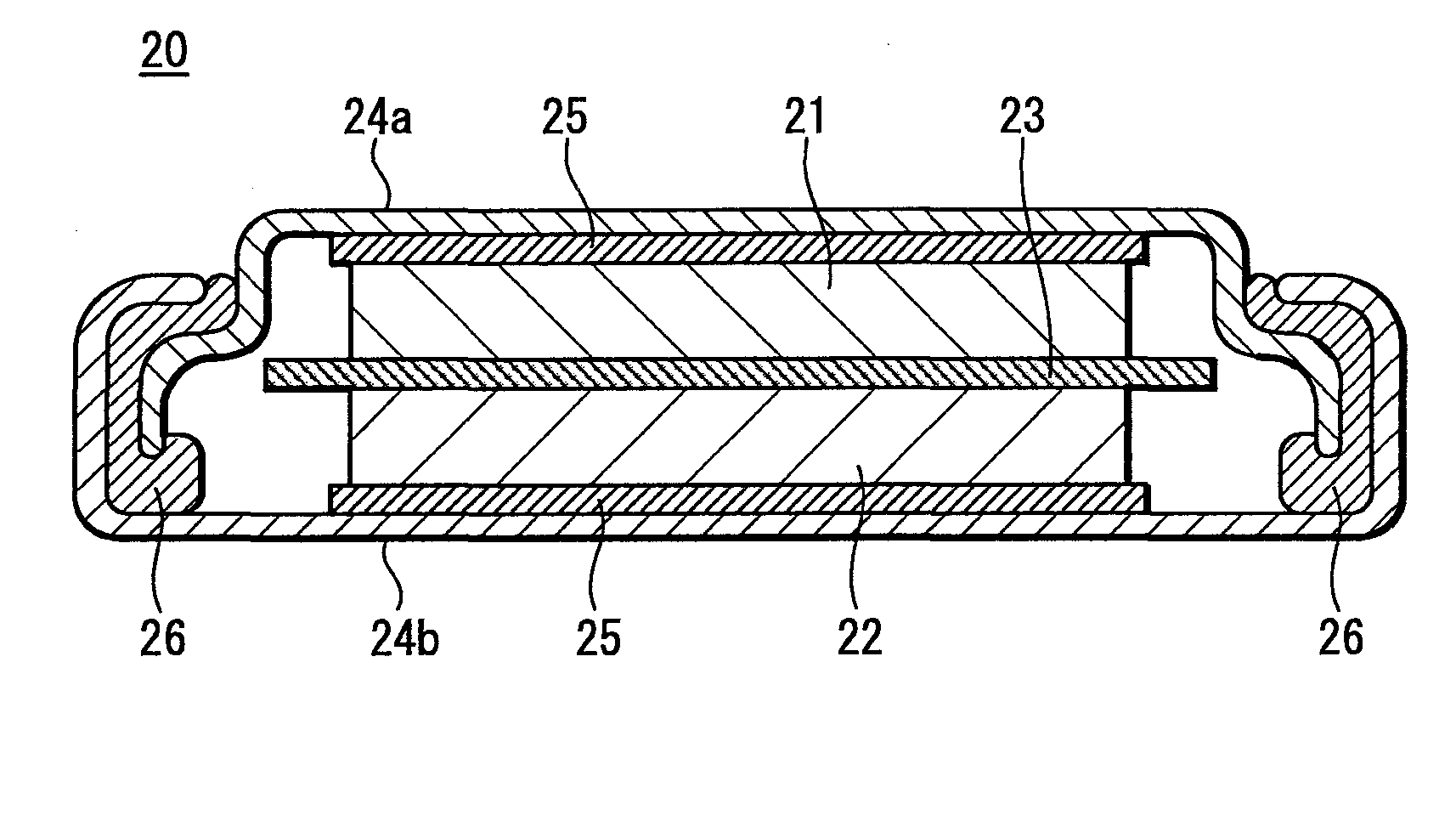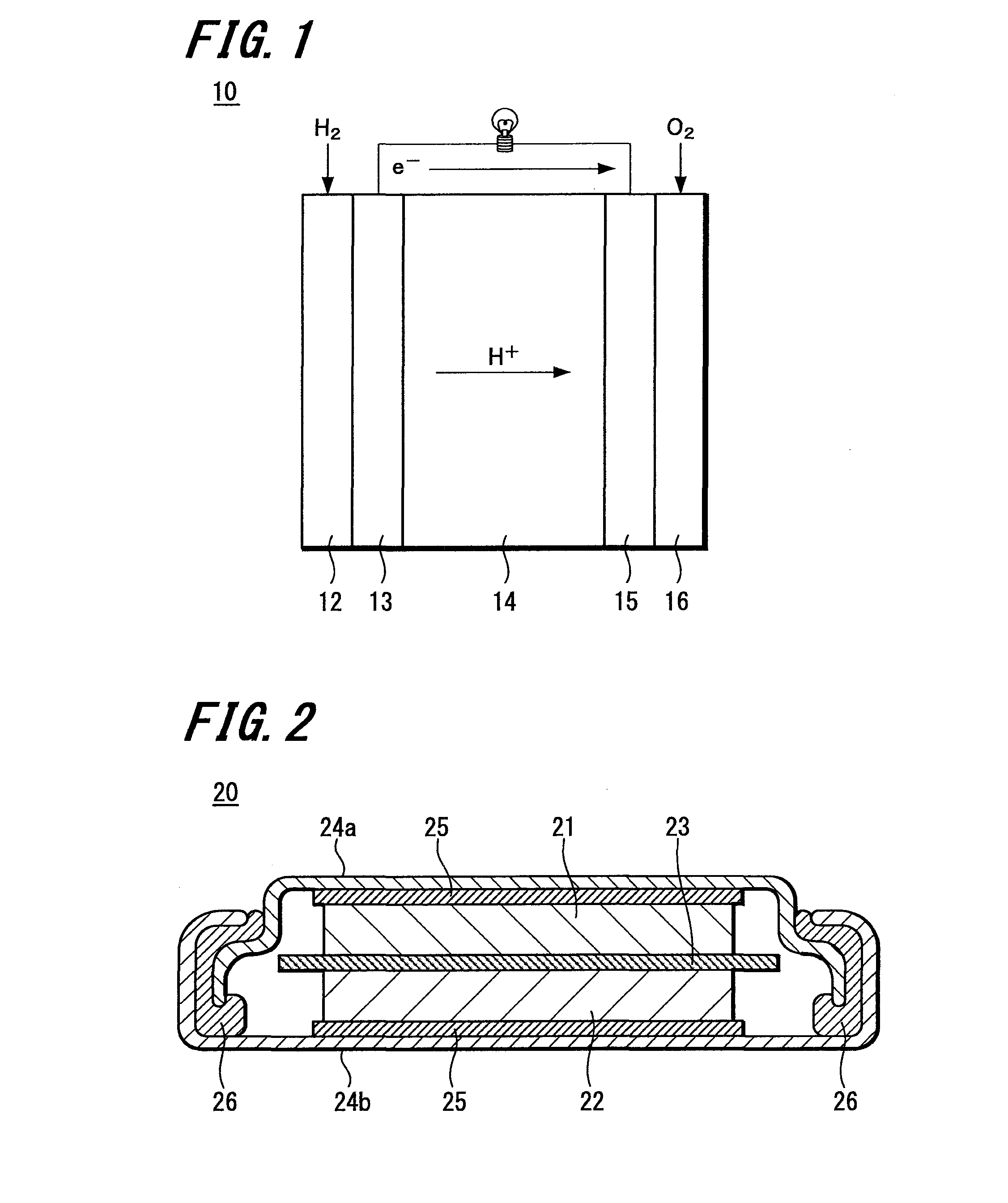Carbon catalyst, slurry containing the carbon catalyst, process for producing carbon catalyst, and fuel cell, storage device, and environmental catalyst each employing carbon catalyst
a technology of carbon catalyst and carbon slurry, which is applied in the direction of catalyst activation/preparation, metal/metal-oxide/metal-hydroxide catalyst, etc., to achieve the effect of prolonging the service life of the electric storage device, reducing the volume of the fuel cell, and increasing the electric storage capacity per unit volum
- Summary
- Abstract
- Description
- Claims
- Application Information
AI Technical Summary
Benefits of technology
Problems solved by technology
Method used
Image
Examples
example 1
Preparation of Polyacrylonitrile-Polymethacrylic Acid Copolymer (PAN-co-PMA)
[0135]Acrylonitrile (manufactured by Wako Pure Chemical Industries, Ltd.) 30.93 g, methacrylic acid (manufactured by Wako Pure Chemical Industries, Ltd.) 4.07 g and pure water 300 ml were put into a four-necked flask, and bubbling was conducted for 15 minutes by using nitrogen gas. Next, the flask was immersed into an oil bath to adjust the temperature of the flask to 70° C. Further, a solution prepared by dissolving 100 mg of potassium peroxydisulfate (manufactured by Wako Pure Chemical Industries, Ltd.) in 50 ml of pure water was injected into the flask, which had been adjusted to 70° C., and stirred for four hours under a nitrogen gas atmosphere so as to be polymerized. Thereafter, the flask was cooled to obtain a milky-white solution.
[0136]Next, the milky-white solution was concentrated, and then the concentrated solution was vacuum-dried at a temperature of 60° C. to obtain about 20 g of polyacrylonitri...
example 2
[0147]Example 2 was identical to Example 1 except that the cobalt oxide in Example 1 was changed into the cobalt chloride (manufactured by Wako Pure Chemical Industries, Ltd.) and, in the preparation of the solution for spinning, the content of the cobalt chloride was 6% by mass based on the total solid content. The activity for oxygen reduction reaction of the carbon catalyst obtained in Example 2 was measured, and the value of the activity for oxygen reduction reaction is shown in Table 1.
example 3
Carbon Dioxide Activation
[0148]The nanofibers were carbonized using the same method as that of Example 1. After crushing treatment, the obtained carbon nanofibers were put into a quartz tube to be subjected to a carbon dioxide gas purge for 20 minutes in an ellipsoidal reflection type infrared gold image furnace, and then the temperature was raised from room temperature to 750° C. over 37 minutes. Thereafter, the temperature was held at 750° C. for one hour, and carbon dioxide activation was performed on the carbonized nanofibers. By using such a method, the carbon catalyst of Example 3 was obtained. The activity for oxygen reduction reaction of the carbon catalyst of Example 3 was measured, and the value of the activity for oxygen reduction reaction is shown in Table 1.
PUM
| Property | Measurement | Unit |
|---|---|---|
| diameter | aaaaa | aaaaa |
| thickness | aaaaa | aaaaa |
| size | aaaaa | aaaaa |
Abstract
Description
Claims
Application Information
 Login to View More
Login to View More - R&D
- Intellectual Property
- Life Sciences
- Materials
- Tech Scout
- Unparalleled Data Quality
- Higher Quality Content
- 60% Fewer Hallucinations
Browse by: Latest US Patents, China's latest patents, Technical Efficacy Thesaurus, Application Domain, Technology Topic, Popular Technical Reports.
© 2025 PatSnap. All rights reserved.Legal|Privacy policy|Modern Slavery Act Transparency Statement|Sitemap|About US| Contact US: help@patsnap.com



